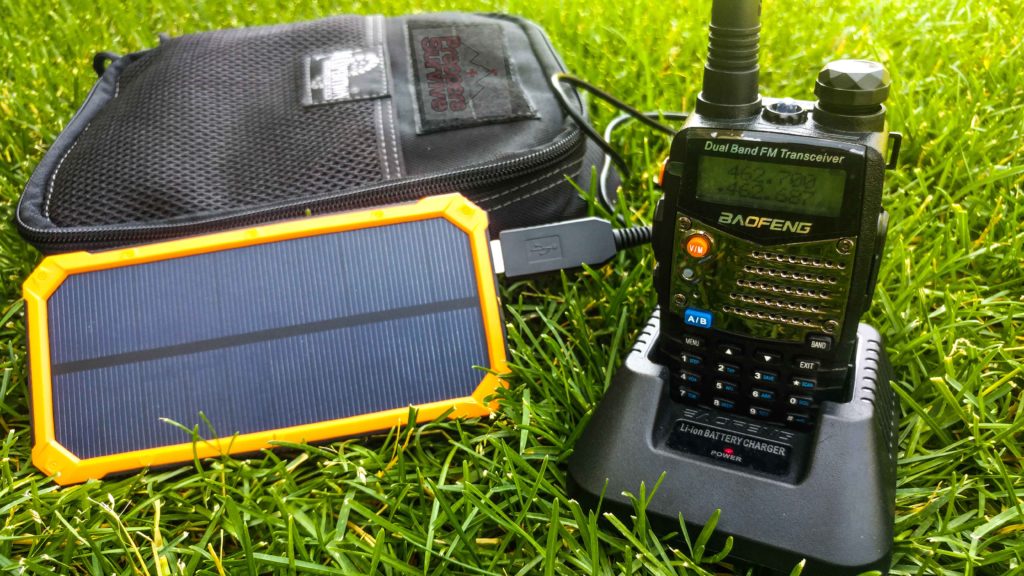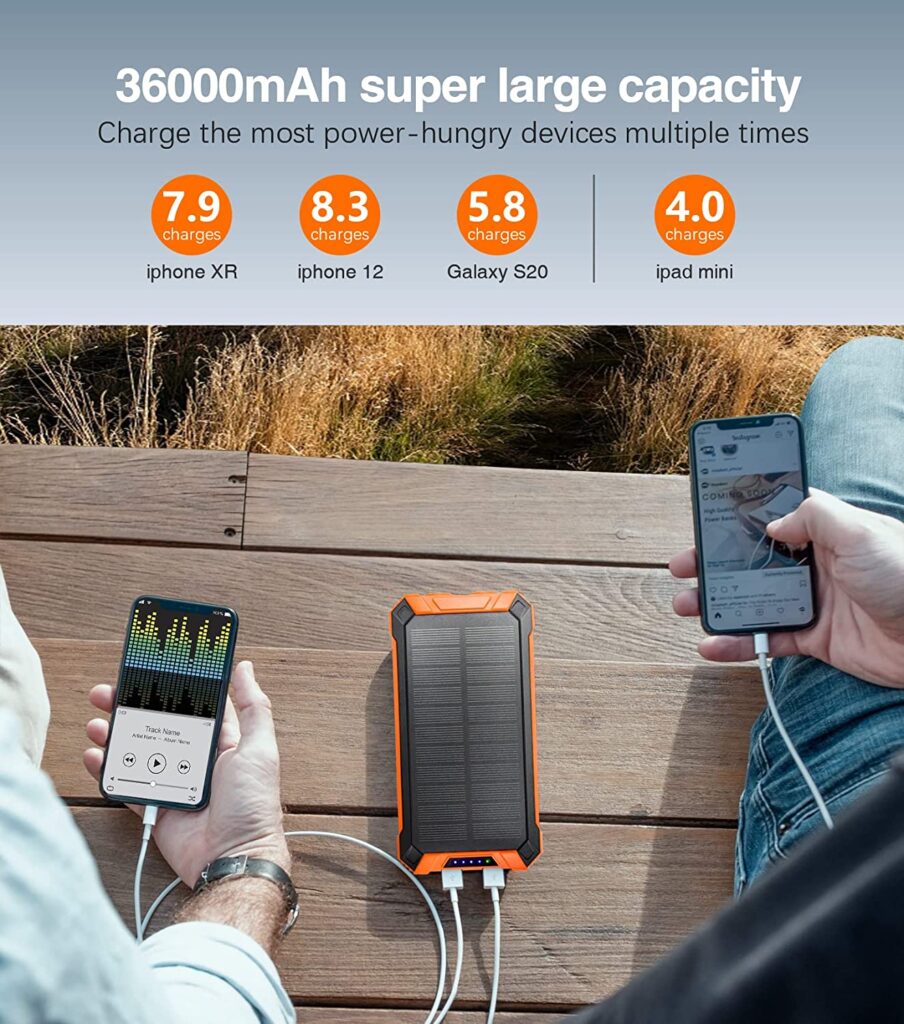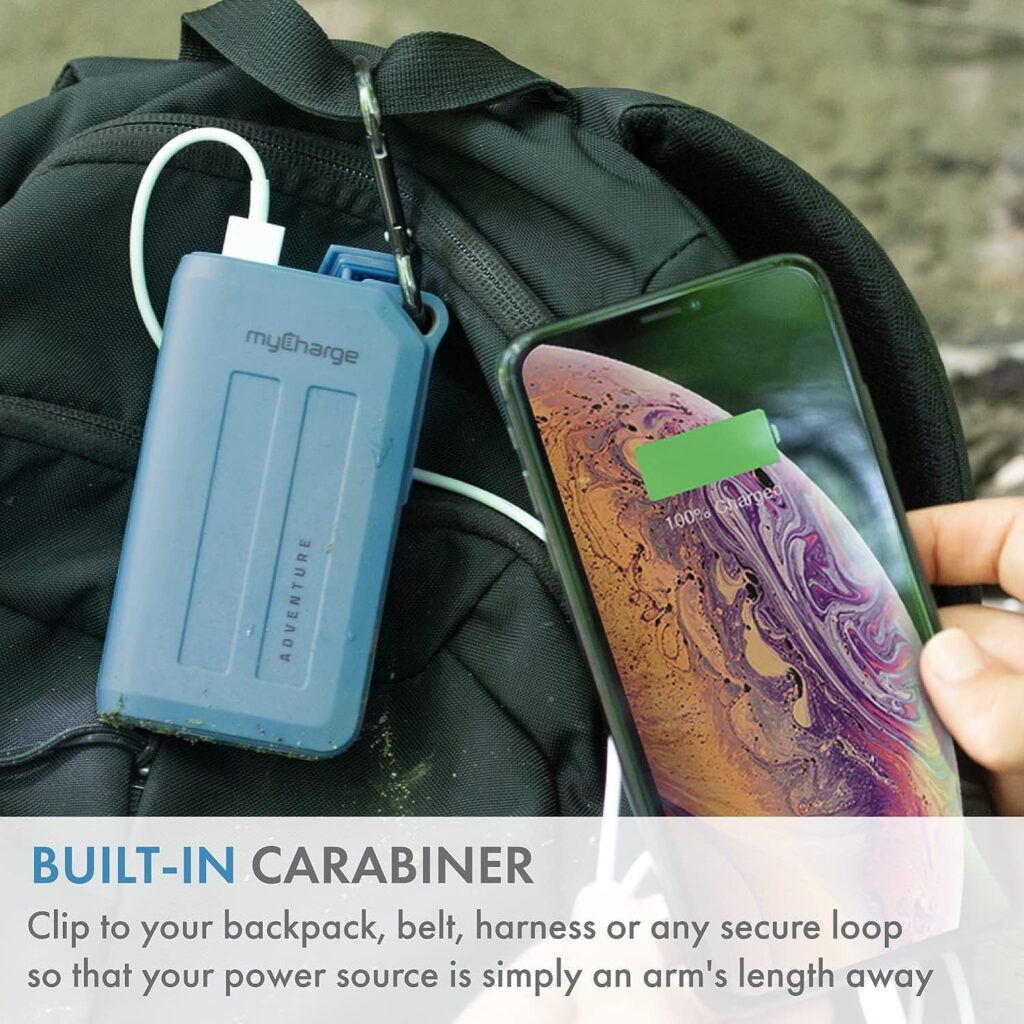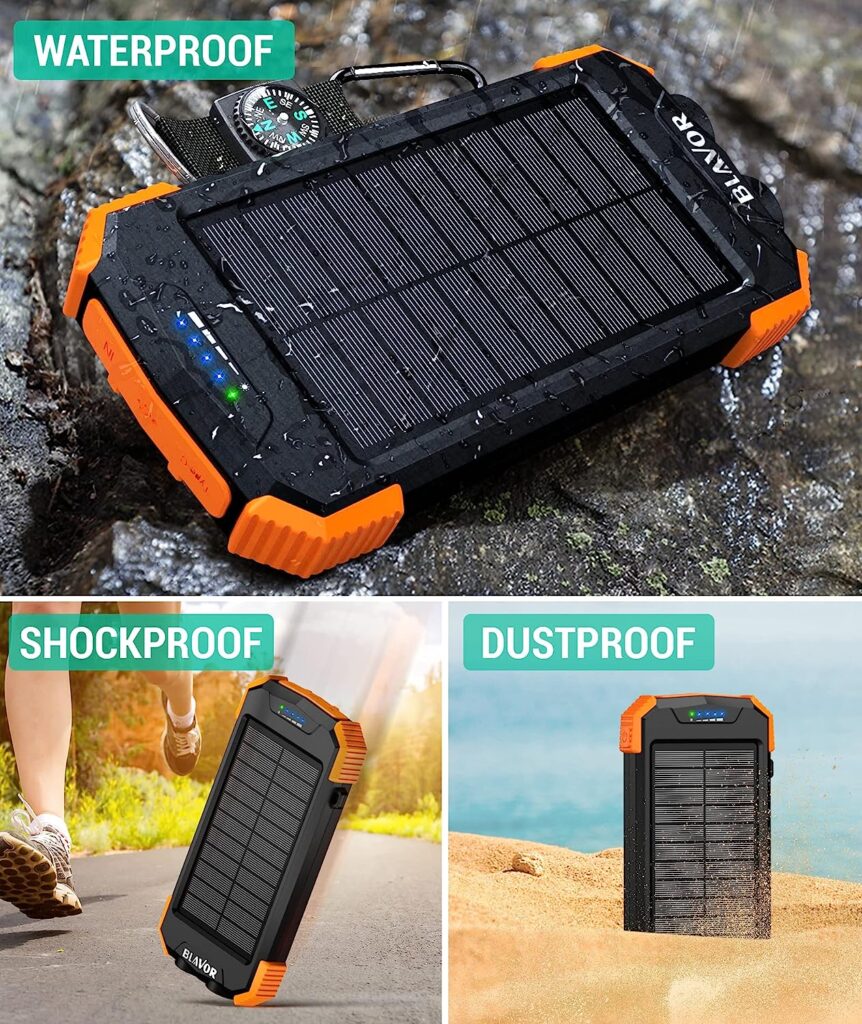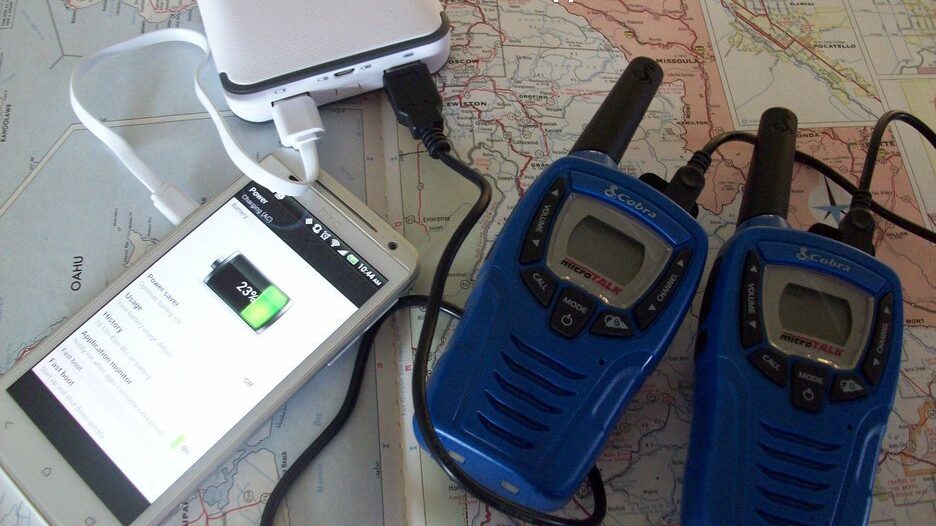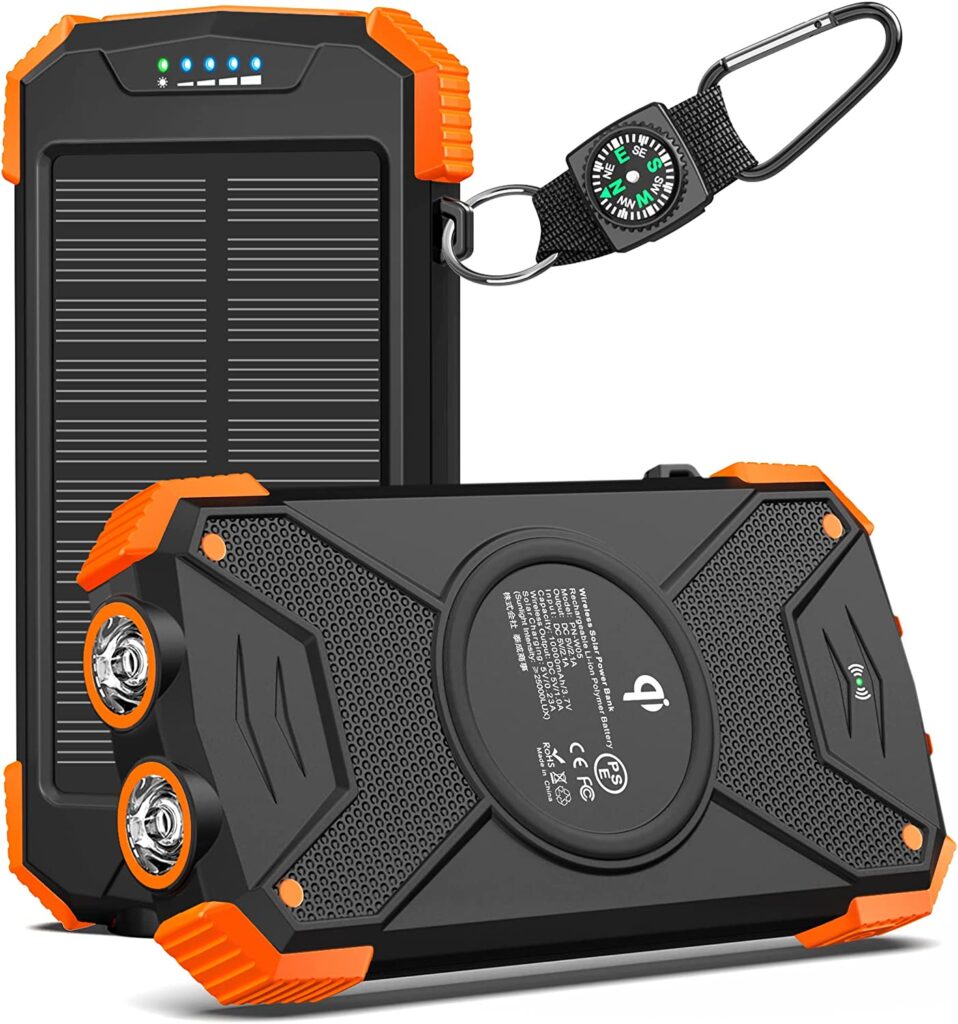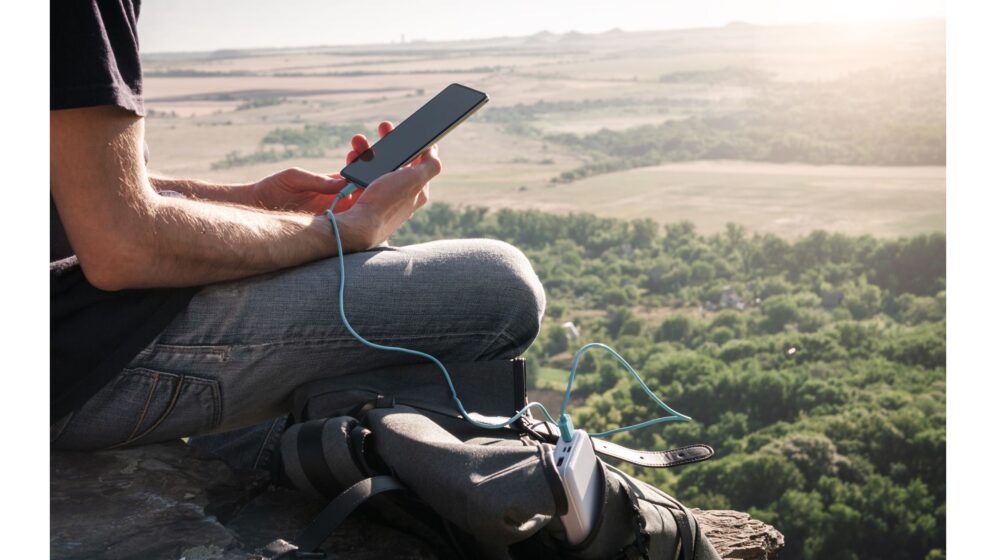
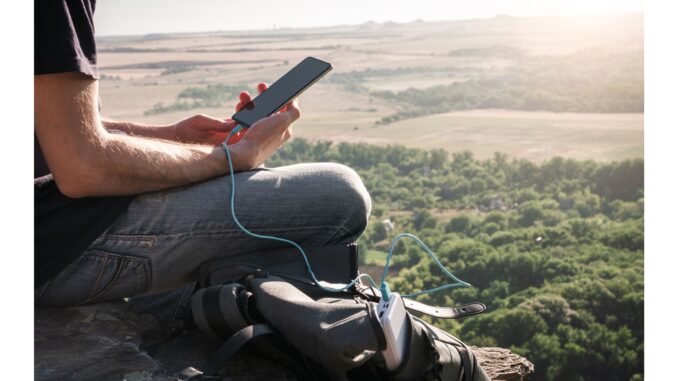
A Guide to Using Power Banks in the Wilderness can be a lifesaver when you’re off-grid. The last thing anyone wants is their phone or GPS passing away mid-hike, ideal?
A trustworthy power bank makes sure that your devices remain energized, even miles away from the nearest outlet. However let’s face it– understanding and choosing the best one can seem like navigating through a dense forest without a compass.
No concerns! Our Guide to Using Power Banks in the Wilderness will help you dominate this difficulty. With our guide, not just will you discover how to pick an outdoor-friendly power bank but likewise master its efficient use for all your wilderness experiences.
Understanding Power Banks and Their Value in the Wilderness
A power bank is a battery-powered device that stores electrical energy, supplying an important source of power for devices such as smart devices, tablets, or laptop computers when away from mains electrical energy. For those who love to check out wild locations, it’s ending up being increasingly important. In places with undependable power grids, like Kampala’s frequent power cuts or serene rural towns where electricity might not always be readily available, having your own personal supply of stored energy becomes vital. This is especially real if you depend on handy electronic gadgets for navigation(like GPS) or communication.
Meaning of a power bank
The term “power bank” refers to any external battery enclosed within a case that can be easily carried around. These devices are available in various shapes and sizes, however they all serve one main function: providing a dependable source of charge when conventional outlets are out of reach.
This procedure permits individuals to experience outdoor adventures without fretting about keeping electronics charged– whether they’re checking out wild places using path guide apps on their phones or capturing stunning landscapes with digital cams.
How do power banks work?
To put it just, a functioning power bank carefully handles the circulation of electrical energy between its internal batteries and connected gadgets via USB ports. When completely charged at home using mains electricity, it stores this energy till required.
You might ask, Why do we require these? Well, think of being stuck deep into bike-packing remote forests while an outdoor camping trip runs longer than expected– all of a sudden, a mobile phone passes away, leaving no other way to call anybody, not to mention inspect a map to find a route back to civilization. That’s precisely the kind of situation where a dependable little device enters play.
Types Of Power Banks
Various types exist relying on user requirements, including compact models appropriate for outing, light enough to carry in pockets, and larger capacity versions that deal with longer journeys, guaranteeing multiple charges prior to depleting entirely. Some even use solar charging capabilities, perfect for prolonged stays outdoors under clear skies.
Decoding Milliampere-Hours (mAh) and Capability Score
In the realm of power banks, understanding milliampere-hours, or mAh, is a game-changer. What does this term represent? Let’s delve into it.
What is mAh? Mah means milliamp hours and represents the total amount of energy that a battery can save. It’s essentially an indicator of how long your gadget will last after being completely charged by the power bank. A greater number means more storage capability, hence a longer use time before requiring another recharge.
This highlights why, while comparing products based on their specified mAh worths offers some guidance, it needs to not be taken as an outright efficiency predictor without considering other elements too.
Analyzing Capacity Scores
- A phone with a 2000mAh battery won’t necessarily last two times as long when powered by a 4000mAh power bank compared to one with only 2000mAh capability since there are many variables at play, consisting of performance losses during the charging procedure itself in addition to standby intake rates under various usage circumstances, which could impact overall outcomes considerably.
- Hence, constantly consider your own individual requirements and choices while choosing about appropriate power banks rather than relying solely on noted requirements alone.
Utilizing Power
Banks Successfully
The world of power banks is more than simply linking your device and waiting for it to charge. It has to do with comprehending the technology behind these portable chargers, such as USB ports, the benefits of USB-C technology, and cordless charging choices.
The function of USB ports in charging
In essence, Universal Serial Bus (USB) ports are a typical feature on most power banks. They act as an interface in between devices, smartphones, or trail guide apps that people experience outdoor adventures with and the power bank itself. Outdoor Directtakes you through this principle rather well and has a range for outdoor items on offer including quality power banks.
If we’re talking numbers here: The variety of readily available USB slots can determine the number of gizmos you can at the same time keep energized while out outdoor camping or checking out wild places without trusted electrical power sources.
Advantages of USB-C innovation
Moving onto newer technologies– there has been a notable shift towards utilizing USB-C innovation. This advancement offers much faster data transfer rates along with more powerful electrical currents compared to its predecessors– vital factors when keeping electronics charged during outside activities.
Another plus point? Reversible plug orientation indicates less hassle attempting to properly connect your battery charger to your phone under low-light conditions normal in tranquil rural towns or dense forests off-the-grid locations where one would generally utilize suitable power bank capacities.
Wireless Charging Options
To remove cable televisions totally from packing lists, consider investing wisely in functioning power banks using cordless charging abilities. Wireless chargers make use of electro-magnetic fields for moving energy in between 2 items– the charger, i.e., our relied on source of kept electrical energy, and any gadget suitable with this kind aspect.
However, bear in mind that not all gadgets support cordless functionality, so constantly inspect compatibility before making purchase decisions.
Choosing a Power Bank for Wilderness Adventures
In the realm of outside experiences, selecting an appropriate power bank can be a game-changer. So what factors should you think about to make this vital decision?
Size, Weight, Durability, and Weather Condition Resistance Considerations The size and weight of your power bank are vital in identifying its mobility. A compact style that doesn’t weigh much is perfect for wilderness journeys, as it won’t take up too much area or include unnecessary heft to your backpack.
Toughness likewise plays a considerable role here. Outside activities frequently involve misuse, which suggests you require something durable sufficient to hold up against periodic knocks without breaking down or malfunctioning too soon.
A knowledgeable path guide
Apart from these physical qualities, weather resistance shouldn’t be ignored either because unforeseeable conditions are part and parcel of any outside adventure. Therefore, opting for water-resistant designs would provide defense versus unexpected shower or unintentional splashes throughout river crossings.
Reputable Brands And Their Offerings
Nevertheless, some have managed to identify themselves through consistent efficiency and reliability.
Intro To Popular Brands Like Anker, Magsafe, myCharge, Blavor, and so on.
Anker, for instance, has actually carved out its niche in the portable charging industry by providing an array of power banks with capabilities that deal with various needs. Whether you’re backpacking in remote forests or just need a backup battery charger for your daily commute, Anker’s varied line of product can meet your requirements.
If you’re an Apple user, though, Magsafe‘s magnetic battery pack may be more up your alley. Created specifically for iPhone 12 and later on models, this innovative service uses effective on-the-go charging with no difficulty.
Compact Pocket-Sized Portable Stations– Benefits And Drawbacks Usage Circumstances Pocket-sized portable stations are best if light-weight convenience is what you seek throughout outdoor adventures such as day walkings or city tours where just periodic top-ups are required. These compact chargers quickly fit into pockets or bags, making them simple companions on brief trips.
However, their smaller sized size frequently translates into lower capacity compared to larger equivalents like separate 10000mAh designs, which might prove inadequate when launching longer wilderness excursions exploring wild places where access to dependable electrical power might not exist.
Matching Output With Device Requirements To optimize effectiveness while utilizing these gadgets, it becomes necessary to understand output criteria such as wattage, voltage, and ampere, ensuring optimum usage and preventing potential damage brought on by mismatched specs. Understanding Output Specifications Of A Power Bank Wattage Voltage Ampere A common USB port offers around 5V/1A output, which is suitable mainly for smart devices. However particular gadgets like tablets and laptops require greater outputs, typically provided by ports significant ‘fast charge’, providing up to 5V/2A -4 A current depending upon device compatibility requirements.
Step By Step Guide to Efficiently Charging Gadgets
To begin, guarantee the device cable television matches the input slot readily available on the battery charger, then link both ends securely. Next, turn on the power button, normally located on the side or front part of the charger. Wait up until the LED indications reveal active status, and finally, leave it linked till completely charged, making sure not to overload beyond the suggested limits.
Matching Output With Device Requirements
In the wilderness, a functioning power bank is as necessary as your path guide app. However to maximize this useful electronic gadget and prevent Kampala’s regular power cuts in tranquil rural towns or while backpacking in remote forests, you require to understand its output parameters: wattage, voltage, and ampere.
Understanding Output Criteria Of A Power Bank: Wattage Voltage Ampere
The total energy that your gizmo needs or offers is measured in watts– which originate from increasing volts (the force driving electric current) by amps (measuring said current). These numbers aren’t just for program; they determine how rapidly devices charge from portable chargers like Anker Power Banks.
Various devices have various requirements when it comes to these metrics. For instance, smartphones generally require an output of 5V/1A whereas tablets frequently call for 5V/2A for effective charging. Plug into a low-output port on your separate 10000mAh models with high-amp gear. You’ll either get no juice at all or wait forever.
Step By
Action Guide to Effectively Charging Devices
To keep things humming along smoothly during outdoor experiences without unreliable power grids around every corner, start by examining both the input rating on your tech toy and the output ranking on their particular ports– generally printed near them.
Now, if everything checks out, plug away, understanding you’re getting optimal usage from each fully charged cell inside that powerhouse. And remember to constantly complete before setting foot outside, where electrical power may not come quickly.
Some bigger capacity options use multiple outputs, allowing simultaneous quick charging across numerous gadgets.
Lastly, do not forget about cable televisions; poor-quality ones can slow down even the best-matched pairs, so select wisely to ensure effective usage.
By comprehending what makes a great pairing in between device requirements and sources, we empower ourselves to explore wild places more confidently and securely.
Curated List Of Recommended Products
Whether you’re an outside lover getting ready for a camping journey or somebody living in locations like Kampala that experience regular power cuts, there’s an ideal power bank out there just waiting to be found.
Selecting the ideal one can feel overwhelming, but fear not. We have actually assembled a list of leading picks customized towards various user needs– from those who choose compact designs perfect for backpacking remote forests to separate 10000mAh models developed specifically for keeping electronics charged throughout extended experiences off the grid.
Leading Picks For Different User Requirements
If high capability combined with several charging ports is your concern, Anker Power Banks are worth thinking about. Known especially for their robust develop quality and outstanding capacities, these gadgets guarantee you never ever run low on juice, even when far away from reliable power grids.
In contrast, if mobility, waterproofing, and price matter more than anything else, myCharge’s offerings might suit you better. Their products strike an exceptional balance in between size and energy storage, making them ideal buddies whether exploring wild locations or merely lounging in the house on your patio.
Last but not least, we have BLAVOR solar-powered battery chargers– eco-friendly services that are perfect, specifically if sustainability ranks high among your top priorities. Utilizing sunshine, they renew batteries while still offering decent performance across all specifications.
These three represent just the tip of the iceberg, though; many other brands also provide compelling items, each bringing unique strengths to the table, so take time to check out and find the best fit for your individual requirements.
Conclusion Comprehending power banks and their significance in the wilderness can be a game-changer for your outdoor experiences.
The principle of milliampere-hours (mAh) and capability rating is no longer a secret, right?
You’ve likewise discovered how to use these handy devices efficiently, taking full advantage of charging effectiveness with different innovations like USB-C and Power Delivery.
Picking an ideal power bank needs considering aspects such as size, weight, sturdiness, and weather resistance, together with crucial functions that accommodate your particular needs.
We have actually explored trustworthy brand names providing first-class products tailored for wilderness escapades. Keep in mind, each has its own pros and cons!
You now know how important it is to match output parameters with gadget requirements– this ensures optimum use while avoiding prospective damage from mismatched specifications.
Lastly, she believes in empowering you with all kinds of outdoor experiences. We hope our Guide to Using Power Banks in the Wilderness assists you make informed decisions about picking the best portable charger. So why wait? Make every adventure unforgettable without fretting about battery life!


